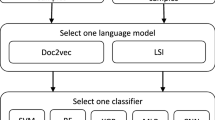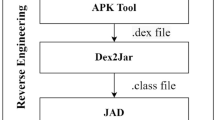Abstract
Libraries may become a liability for users security. Existing studies show that libraries can be exploited to propagate malware. Hackers utilize fake or modified libraries to execute malicious behaviours. Vetting library instances in applications are desirable. However, it is impeded by the absence of robust library detection method and library vetting method. This paper proposes a hybrid library detection method that it combines name-based method and feature-based method to identify library instances in applications. It can resist simple identifier renaming. Furthermore, this paper proposes an abnormal library detection method that it utilizes frequent pattern to measure the normal degree of library instances. Comparing with existing methods, the abnormal library detection method can not rely on original library files. A ground truth dataset that it consists of 177 malicious applications with abnormal library instance and 81,317 benign apps is used to demonstrate the effectiveness of proposed approaches. Experimental results show that the approaches can precisely detect library instances and effectively reduce the cost of abnormal library detection.


Similar content being viewed by others
References
Wang, H., Guo, Y., Ma, Z., & Chen, X. (2015). WuKong: A scalable and accurate two-phase approach to Android app clone detection. In Proceedings of the 2015 international symposium on software testing and analysis (pp. 71–82). ACM.
Faruki, P., Bharmal, A., Laxmi, V., Ganmoor, V., Gaur, M. S., Conti, M., et al. (2015). Android security: A survey of issues, malware penetration, and defenses. IEEE Communications Surveys and Tutorials, 17(2), 998–1022.
Li, L., Bissyand, T. F., Klein, J., & Traon, Y. L. (2015). An Investigation into the Use of Common Libraries in Android Apps. Preprint arXiv:1511.06554.
Hu, W., Octeau, D., McDaniel, P. D., & Liu, P. (2014). Duet: Library integrity verification for android applications. In Proceedings of the 2014 ACM conference on security and privacy in wireless and mobile networks (pp. 141–152). ACM.
Backes, M., Bugiel, S., & Derr, E. (2016). Reliable Third-Party Library Detection in Android and its Security Applications. In Proceedings of the 23rd ACM conference on computer and communication security (CCS16) (pp. 356–367). ACM.
ProGuard. (2017). http://developer.android.com/tools/help/proguard.html.
Li, L., Li, D., Bissyand, T. F., Klein, J., Traon, Y. L., Lo, D., et al. (2017). Understanding android app piggybacking: A systematic study of malicious code grafting. IEEE Transactions on Information Forensics and Security, 12(6), 1269–1284. https://doi.org/10.1109/TIFS.2017.2656460.
Zhou, Y., & Jiang, X. (2012). Dissecting android malware: Characterization and evolution. In 2012 IEEE Symposium on Security and Privacy (SP) (pp. 95–109). IEEE.
He, Z., Xu, X., Huang, J. Z., & Deng, S. (2005). FP-outlier: Frequent pattern based outlier detection. Computer Science and Information Systems, 2(1), 103–118.
Zhang, W., Wu, J., & Yu, J. (2010). An improved method of outlier detection based on frequent pattern. In 2010 WASE international conference on information engineering (ICIE) (Vol. 2, pp. 3–6). IEEE.
Virustotal—free online virus, malware and url scanner. (2017). www.virustotal.com.
Liu, B., Liu, B., Jin, H., & Govindan, R. (2015). Efficient privilege de-escalation for ad libraries in mobile apps. In Proceedings of the 13th annual international conference on mobile systems, applications, and services (pp. 89–103). ACM
Sarma, B. P., Li, N., Gates, C., Potharaju, R., Nita-Rotaru, C., & Molloy, I. (2012). Android permissions: A perspective combining risks and benefits. In Proceedings of the 17th ACM symposium on access control models and technologies (pp. 13–22). ACM.
Nan, Y., Yang, M., Yang, Z., Zhou, S., Gu, G., & Wang, X. (2015). Uipicker: User-input privacy identification in mobile applications. In USENIX Security (pp. 993–1008).
Short, A., & Li, F. (2014). Android smartphone third party advertising library data leak analysis. In 2014 IEEE 11th international conference on mobile ad hoc and sensor systems (MASS) (pp. 749–754). IEEE.
Demetriou, S., Merrill, W., Yang, W., Zhang, A., & Gunter, C. (2016). A. Free for all! assessing user data exposure to advertising libraries on android. In Proceedings of the 23th annual network and distributed system security symposium (NDSS), San Diego, California, USA, February 21–24, 2016.
Derr, E., Bugiel, S., Fahl, S., Acar, Y., & Backes, M. (2017). Keep me updated: An empirical study of third-party library updatability on android. In Proceedings of the 24rd ACM conference on computer and communication security (CCS17) (pp. 2187–2200). ACM.
Li, M., Wang, W., Wang, P., Wang, S., Wu, D., Liu, J., et al. (2017). LibD: Scalable and precise third-party library detection in android markets. Paper presented at the Proceedings of the 39th International Conference on Software Engineering, Buenos Aires, Argentina.
Ma, Z., Wang, H., Guo, Y., & Chen, X. (2016). LibRadar: Fast and accurate detection of third-party libraries in Android apps. In Proceedings of the 38th international conference on software engineering companion (pp. 653–656). ACM.
Wang, F., Zhang, Y., Wang, K., Liu, P., & Wang, W. (2016). Stay in Your Cage! A Sound Sandbox for Third-Party Libraries on Android. In I. Askoxylakis, S. Ioannidis, S. Katsikas, & C. Meadows (Eds.), Computer Security ESORICS 2016: 21st European symposium on research in computer security, Heraklion, Greece, September 26–30, 2016, Proceedings (pp. 458–476). Cham: Springer International Publishing.
Acknowledgements
This work is supported by the National Key Research and Development Program of China (No. 2016YFB0800402), National Natural Science Foundation of China under Grants 61572221, U1401258, 61433006, 61300222, 61370230 and 61173170, Innovation Fund of Huazhong University of Science and Technology under grants 2015TS069 and 2015TS071, Science and Technology Support Program of Hubei Province under Grant 2015AAA013 and 2014BCH270, and Science and Technology Program of Guangdong Province under Grant 2014B010111007.
Author information
Authors and Affiliations
Corresponding author
Rights and permissions
About this article
Cite this article
Han, H., Li, R. & Tang, J. Identify and Inspect Libraries in Android Applications. Wireless Pers Commun 103, 491–503 (2018). https://doi.org/10.1007/s11277-018-5456-4
Published:
Issue Date:
DOI: https://doi.org/10.1007/s11277-018-5456-4




